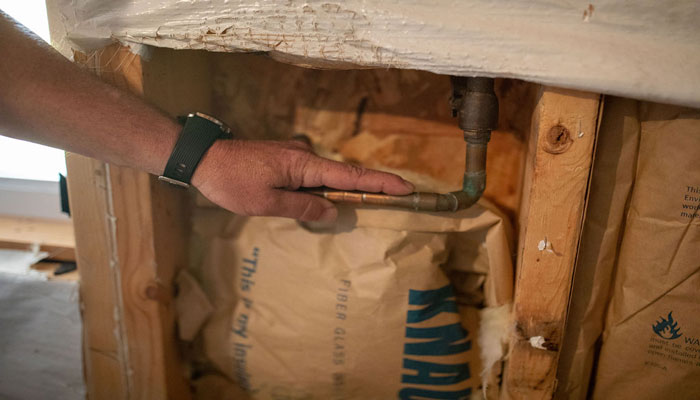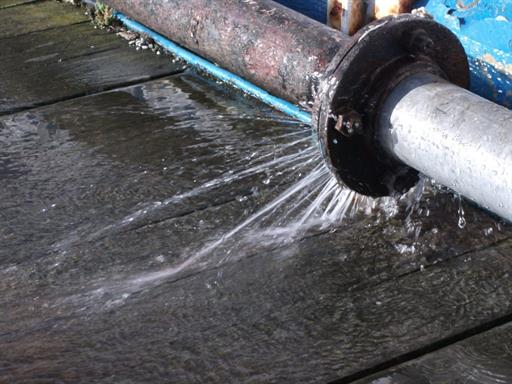Burst Pipes? No Panic! Just how to Identify and Fix Quickly
Burst Pipes? No Panic! Just how to Identify and Fix Quickly
Blog Article
Every person has their own rationale involving How to Install and Connect a New Dishwasher.

A burst pipe is a significant emergency; you can only stand as you watch water you pay very much to rejoin with the earth. In even worse cases, you see a pool on your cooking area flooring, which is a terrific journey risk, specifically if you have children around. If the pipeline that burst remained in your wall surfaces, bad news: you might need to repaint that whole section.
Exactly how can a tragedy like a burst pipe be protected against as well as handled? Well, by paying attention to your professional emergency plumbing technicians and following these policies.
Just how do I know when my pipelines have ruptured?
Rising and fall water pressures
Pipelines do not simply burst in a day. You might have seen that your kitchen tap or shower does not run immediately when you turn the faucet. It might pause for a few seconds and afterwards blast you with even more force than usual.
In other instances, the water may appear regular at first, then drop in stress after a couple of secs.
Wet walls as well as water discolorations
Prior to a pipe bursts, it will leakage, the majority of times. If this relentless dripping goes unnoticed, the leak may finish right into a vast gash in your pipe. One very easy way to avoid this emergency is to keep an eye out for damp walls ad water spots. These water discolorations will lead you right to the leak.
Puddles under pipelines and also sinks
When a pipe bursts, the discharge creates a pool. It may appear that the puddle is expanding in dimension, and no matter the number of times you wipe the pool, in a couple of minutes, there's another one waiting to be cleaned. Frequently, you may not be able to map the pool to any kind of noticeable pipelines. This is a sign to call a professional plumber.
Untraceable dripping noises
Pipe bursts can happen in one of the most undesirable areas, like within concrete, inside wall surfaces, or under sinks. When your house goes quiet, you might have the ability to listen to an aggravatingly consistent leaking noise. Even after you've checked your shower head and also cooking area faucet, the leaking may continue.
Dear reader, the dripping may be originating from a pipeline inside your wall surfaces. There isn't much you can do regarding that, except tell an expert plumber.
Shut off the Water
When water ices up, it increases in quantity by regarding 9 percent. And it expands with tremendous pressure: The stress inside pipes may go from 40 pounds per square inch to 40,000 psi! No pipeline can hold that much stress, so it breaks open. The break may occur where the ice kinds, however more frequently, it occurs where water pressure locates a vulnerable point in the pipe. That may be inches or perhaps feet from the icy area. Find the water shutoff valve and also switch off the water to avoid more damages. You could likewise need to shut down the electrical energy also, depending on where the leakages happens and how large it is.
Polluted water
Many people think a burst pipe is a one-way electrical outlet. Rather the contrary. As water flows out of the hole or wound in your plumbing system, pollutants find their method.
Your water may be contaminated from the resource, so if you can, inspect if your water container has any type of problems. Nonetheless, if your drinking water is supplied as well as purified by the local government, you ought to call your plumber immediately if you see or smell anything funny in your water.
What do I do when I identify a burst pipeline?
Your water meter will remain to run even while your water wastes. To decrease your losses, discover the major controls as well as transform the supply off. The water mains are an above-ground structure beside your residential or commercial property.
How to Fix & Detect a Leaking Pipe
How Do I Know if a Pipe is Leaking?
Leak detection tests can help you determine if your pipe has a leak. Even if you don’t see an apparent leak, you should still conduct leak detection tests regularly to save water and money—and prevent major damage to your home.
Water meter. It can be helpful to figure out what your usual water meter usage numbers are and then monitor them regularly. To monitor your meter, first, turn off all water faucets in your home. Check the meter and write down the numbers. In a few hours, check the meter again. If the numbers have changed, you have a leak. Water gauge. Use a water gauge to test your water pressure. Your showerhead should produce a certain amount of water pressure based on its model and design. If the pressure is lower than it is supposed to be for that specific showerhead, your home likely has a leak. Puddles. Look inside your bathroom, laundry, and kitchen sink cabinets. Puddles around the cabinets or around toilets, tubs, showers, and washing machines indicate the presence of a leaking pipe. You may also notice loose tiles, peeling or flaking paint, or mold caused by water accumulation. Napkin test. Even if you don’t see any puddles, you may still have a leak. You can test for water leaks in the bathroom, laundry, and kitchen by wiping below-sink connections with a napkin, paper towel, or piece of toilet paper. If it becomes damp, you probably have a leaking pipe under the sink. Discolored walls. Walls that are discolored—usually with brown or yellow stains—or bulging might mean that they have been impacted by water damage caused by a leaking pipe. Smell. A leaky pipe will create sitting water, and over time, that water may develop a musty smell. If your home smells musty, but you can’t locate the source, it may be due to a leak. Steps for Fixing a Leaking Pipe
A leaky drain can be remedied by tightening the pipe base, replacing the drain seal, caulking the rim, and tightening the pipe nut. Similarly, a leaking toilet pipe can be treated by tightening the packing nut. You may also need to replace the valve. A leaky faucet may just need tightening or replacement of the washers. If that doesn’t work, consider replacing your faucet. If your pipe has a hole in it, you may want to use a pipe leak sealer or pipe leak tape. This quick fix for water pipe leaks can also temporarily fix a copper pipe leak. https://www.ahs.com/home-matters/quick-tips/how-to-tell-if-pipes-are-leaking/

Do you really like reading up on How to Prepare for Your Dishwasher Installation? Put a remark directly below. We will be interested to see your reactions about this blog entry. We are looking forward that you come back again soon. So long as you enjoyed reading our page please remember to share it. Thanks for going through it.
Explore
Report this page